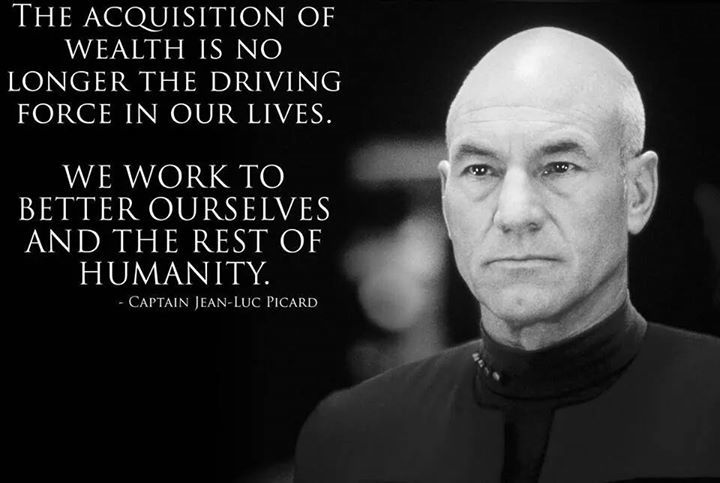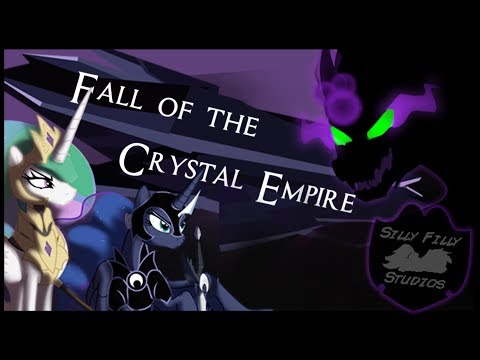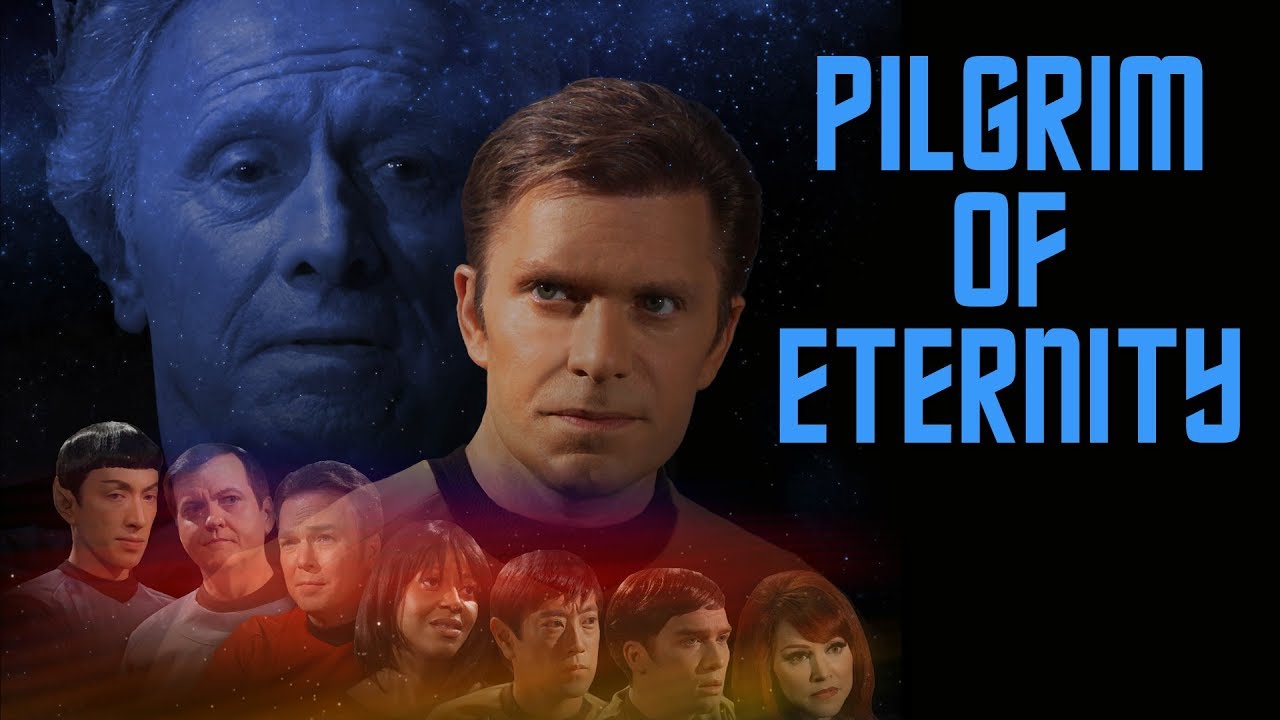This is going to be a weird post that pretty much looks like a very mixed bag. Nevertheless, I think it is important, because it aims to connect to what actually drives us to do things that go beyond the mere upkeep of our existence.
First of all, let’s start with some videos from the brony fandom:
Why? Because they are awe inspiring fan made animated videos that display the creative power of that particular fandom:
What is especially astonishing about the last video is that it was a project that took 2 and a half years to complete! For a single 7 minute video! The required level of dedication for such a project that is essentially a free spare time project speaks volumes. What drives people to do things like that? Such actions are certainly indicative of a very high level of passion and intrinsic motivation.
The Brony fandom is certainly not unique in that is inspires a whole lot of creative output like fan fiction, or videos. The Star Trek fandom is another amazing example that demonstrates impressive displays of skill, ambition, and passion. Let’s consider two examples of fan made videos:
For fan made projects their quality is simply insane. Those videos could well have been part of the official Star Trek productions, but they were actually made by fans on a tiny budget.
Those fandoms are obviously deeply inspired by the respective original productions. But what made the seemingly different Star Trek and My Little Pony: Friendship is Magic so inspiring after all? Vision! Both original works can be seen as works belonging to the general category of speculative fiction, which encompasses science fiction and fantasy.
my thesis is that both worlds provide a positive social vision which makes them emotionally very compelling! Let me start with a meme that has been running around Facebook recently:

Star Trek has amazing technology, but that is not the point. The point is that this technology is used to transform not only society, but also be motivations, aspirations, and behaviour of people. The Federation is post-capitalist and people are really mostly motivated by pushing the boundaries, both their personal boundaries of skill and humanity, and the boundaries of exploration of outer space. The characters in Star Trek have moved beyond petty squabbles about belongings. And they are inspired by the great vision of peace between different civilizations and alien cultures.
Which indeed has parallels in the world of Equestria, the pony kingdom of MLP: FiM. Equestria is populated mainly by earth ponies, pegasi, and unicorns, which live together in peace – along with a few donkeys, zebras, cows, and griffins. In that sense, Equestia is similar to the Federation in Star Trek. And it’s not only the appreciation of peace and diversity that is common in both worlds. The focus of people in both worlds is really being the best version of yourself that you can be. The ponies in Equestria have “cutie marks” which are a graphical representation of their special personal talents. Ponies typically love living put their (sometimes magically reinforced) talents.
In both worlds, people are mostly intrinsically motivated! External rewards play a minor role. There is no poverty in both worlds, and very little estrangement. Peace and friendship are strong forces in both worlds. Though there is conflict, it often gets resolved by cooperation and mutual understanding.
Even though there are other very remarkable original works of fiction, few fandoms reach the level of common inspiration of the trekkies and the brony fandom. And the positive social vision is probably the reason for that. The Lord of the Rings is a totally amazing and popular work of fiction, but it hasn’t spawned such a popular and visible fandom as Star Trek and MLP: FiM. Why? Because it’s too dark! Sure, LotR is very moving and inspiring on a personal level when it comes to the characters of LotR, but the social vision is at best limited to the Shire, in which Hobbits live in relative harmony until the conflicts of the surrounding world engulf it in shadows. Of course, the Shire could have been taken as inspiration that the LotR fandom could have used for creative works. But the Shire is not the focus of LotR, it is merely the idyllic background to provide a contrast to the threat of war and destruction by dark forces. LotR is a story about personal struggle with those dark forces from without and even within, but it’s not a setting that focuses on a positive social vision.
Now, let’s come to two quite different movements: The Pirate parties and the transhumanist movement. It is really amazing that the Pirate parties have had a lot of quick successes. Going from inception to sending politicians to the European parliament within a few years is a great feat by any standard. How could that be achieved? Vision, passion, leadership, inspiration!
The underlying vision of the Pirate parties was that of a post-copyright world in which people were free to download whatever they want for free without being politically prosecuted for doing so. It turned out that this vision was very inspiring and resonated with the passions of people. But still, without the inspiring leadership of people like Rick Falkvinge, the founder and leader of the Swedish Pirate party, the movement couldn’t have won its victories as quickly as it has done. Fortunately, Falkvinge even bothered with writing down a manual for how we did that: Swarmwise: The Tactical Manual To Changing The World, which is available for free!
The Pirate parties are not fandoms, but basically activist groups. Still, both are motivated by passion and inspiration. Those elements are also present within the transhumanist movement. In some sense, the transhumanist movement is both a fandom, and an activist movement. Its aspects as fandom become clear when considering some prominent transhumanist leaders: The fist is futurist, inventor, and entrepreneur Ray Kurzweil:
Kurzweil promoted positive technological visions in his books, perhaps most brilliantly in his seminal book The Singularity is Near:
His company Kurzweil AI has a website that presents cutting edge technology news, and also allows people to discuss those news and his ideas in the forums on that site. Many people there see themselves as fans of Ray Kurzweil and his visions. They aren’t very visibly creative, but they discuss very futuristic ideas freely.
The second example of a fandom within the broader transhumanist community is the rationality community Less Wrong that was founded by Eliezer Yudkowsky. Yudkowsky is certainly an intriguing and controversial leader. He tries saving the world by making people more rational and by creating “friendly artificial intelligence”. At times, the Less Wrong community can feel like a cult around Yudkowsky, due to the extensive use of “rationality slang” that was coined in large part by Yudkowsky himself. In contrast to the Kurzweil AI community, Less Wrong can actually be seen as creative fandom that actually produces remarkable works of fan fiction which are set in, among others, fantasy worlds of Harry Potter, MLP: FiM, or Deathnote. These works of fan fiction are however inspired by the mission to teach people how to become more rational. Behind this, there seems to be a vision of a more peaceful and prosperous world enabled by rationality and friendly artificial intelligence. So, even in this situation, a positive social fiction seems to inspire a fandom to become wildly creative and motivated.
Now, let’s come to the activist aspect of the transhumanist movement. More specifically, the very new Transhumanist parties in the US and UK lead by Zoltan Istvan and Amon Twyman respectively. Istvan is the person who started the whole endeavour of political transhumanism. He did this on the basis of his highly successful and controversial science fiction novel The Transhumanist Wager.
There does seem to be a positive social vision presented in his book, but it seems to be a rather cold and ruthless one, based on a wild mix of anarcho-capitalism, temporary dictatorship, and a minimalist philosophy called “Teleological Egocentric Functionalism”. In the book, the main protagonist manages to create an independent nation called Transhumania which is based on his rule and working towards creating a transhumanist world ruled by cold reason, enlightened egoism, and advanced technology.
Although Istvan has distanced himself from his novel to some degree, it is clear, that he is at least party inspired by his vision of a transhumanist future. What is really remarkable, however, is how he used his candidacy for the office of the President of the USA to gain a surprising amount of media attention. This, in turn, has triggered people around the world to create Transhumanist parties, though all of them are still in their very infancy. Istvan’s initiative, passion, and media strategy have inspired people around the world to step up and become politically active for transhumanism.
What still seems to be missing for the global political transhumanist movement, though, it a common positive social vision. Neither Istvan’s novel, nor the rationality movement around Eliezer Yudkowsky provide a common vision for the whole of the transhumanist community.
But to become at least as successful as the Pirate parties, the Transhumanist parties need to provide and sell an emotionally compelling vision. The visual artist Jason Silva is certainly trying to inspire people for the possibilities of transhumanism on his YouTube channel Shots of Awe, but a clearly tangible and coherent social vision doesn’t necessarily emerge out of his works.
What the transhumanist movement needs most is an equivalent to the compelling positive social visions of Star Trek and MLP:FiM. If it can come up with that, then it can succeed greatly. If it fails providing such an inspiring vision, then its practical impact on the world may remain marginal for quite a while.




